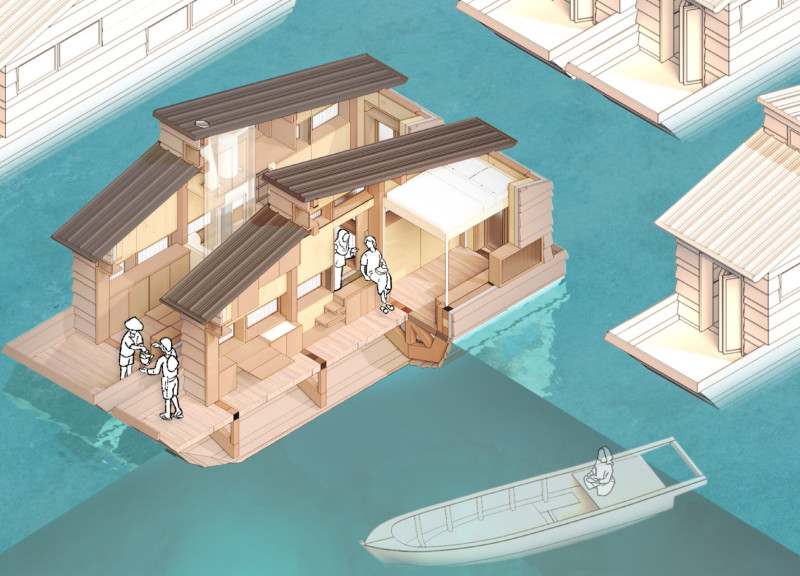5 key facts about this project
At its core, this project serves as [insert function, such as a community center, residential building, or cultural institution], designed to accommodate the specific needs of its users while fostering a sense of community and belonging. The architecture employs an open-plan layout that encourages fluid movement between different spaces, ensuring that various activities can coexist while promoting interaction and collaboration among users. The thoughtful arrangement of areas within the project enhances usability, making it accessible and welcoming to all.
A defining feature of the project is its materiality. The selection of materials such as reinforced concrete, high-performance glazing, sustainable timber, mild steel, cut stone, and ceramic tiles reflects a conscious decision to create a balanced relationship between durability, maintenance, and visual appeal. These materials are not merely functional; they also contribute to the project’s character, infusing warmth through wood, transparency via glass, and a sense of permanence with stone elements. The tactile nature of the materials encourages engagement with the building, inviting users to form a personal connection with the space.
Another notable aspect of this architectural endeavor is its facade. The design thoughtfully considers the interaction of light and shadow, creating an ever-changing visual dynamic throughout the day. The facade integrates various design techniques, including the strategic placement of windows and overhangs, which provide both aesthetic pleasure and practical benefits, such as natural ventilation and reduced heat gain. This approach showcases the project’s commitment to sustainability by minimizing energy consumption while ensuring a comfortable interior environment.
The landscaping surrounding the project further enhances its architectural expression. The integration of gardens, native plant species, and outdoor gathering spaces reflects an understanding of the ecological context and a desire to promote biodiversity. The design encourages outdoor interaction, providing areas for relaxation, socialization, and recreation. This thoughtful landscaping strategy complements the architectural syntax, creating a cohesive experience that connects the building with the natural landscape.
Unique design approaches are evident throughout the project. For example, the use of passive design strategies—such as cross-ventilation, daylighting, and thermal mass—illustrates a thorough understanding of environmental principles. These strategies not only reduce reliance on mechanical systems but also foster an inherent connection between occupants and their environment. Additionally, the project may incorporate smart technology to enhance functionality, allowing users to engage with the space in innovative ways.
Moreover, the project’s commitment to sustainability extends beyond physical aspects. The design emphasizes life-cycle considerations, ensuring that the building will endure while maintaining its environmental integrity over time. This forward-thinking approach is increasingly vital in contemporary architecture, as practitioners recognize the importance of creating structures that will remain relevant and functional for future generations.
In summary, the project showcases a cohesive blend of architectural design principles, functionality, and environmental stewardship. Each architectural choice reflects a deeper understanding of the context, user needs, and ecological significance. For those interested in delving deeper into this project’s intricate details, a visit to the project presentation is encouraged. Exploring the architectural plans, sections, designs, and innovative ideas will provide further insight into the thoughtful considerations that have shaped this exemplary architectural endeavor.


 William Chandra ,
William Chandra , 























